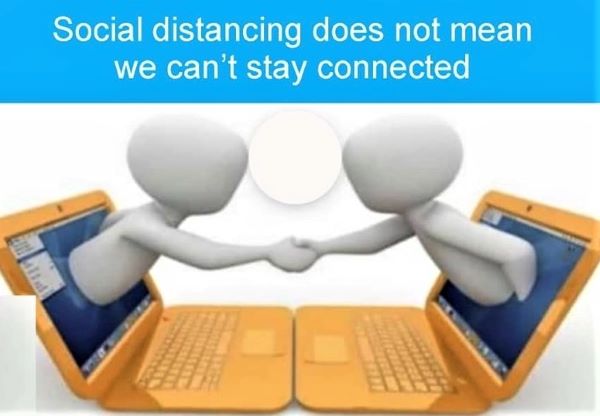
We wanted to share some basic advice regarding managing a hybrid meeting, based on the experience of the Upper Arlington Rotary Club, which has been conducting hybrid meetings since June 2nd and has given us permission to share this with you. The following are some tips they shared for using videoconferencing in a hybrid Rotary Club meeting:
- Make sure your meeting space is configured with strong Wi-Fi capabilities.
- Utilize at least two Wi-Fi capable devices in the room (laptops seem to work best – Upper Arlington Rotary found that the videoconference integration with the live meeting doesn’t work as well with phones or iPads, but it might also work to have only one laptop in the room which is operated by the videoconference “host” and have that laptop connected to a camera at the podium). Both devices will log into the meeting using the videoconference app you are using.
- One laptop will be located at the podium (the “Podium Laptop”). The Podium Laptop will be logged in as a “participant” to the videoconference (not the host of the meeting with meeting controls).
- The Podium Laptop will utilize its camera and built-in microphone to pick of the video and audio of the speaker at the podium.
- For larger spaces, you will want a separate microphone for the PA in the meeting room.
- The Podium Laptop will also have a “video out” cable attaching the laptop to a projector or video display in the room. That video will be for the benefit of in-person meeting attendees.
- The second laptop (the “Host Laptop”) will be located at the back of the room. That laptop will be the “host” of the videoconference session.
- The person operating the Host Laptop will be responsible for monitoring participants who fail to mute their own microphone and for other videoconferencing controls. This is why you don’t want the Podium Laptop to be the meeting host and have to worry about these issues.
- The Host Laptop should be placed as far from the Podium Laptop as possible in order to avoid a feedback loop. Speaker volume on the Host Laptop should be kept off in order to minimize feedback (or have that laptop audio out go to headphones).
- The Host Laptop will also have any PowerPoint programs or other audio/video programs for the meeting loaded on it, and the operator of the Host Laptop will “share screen” with in the videoconference, which will also result in the Podium Laptop having the PowerPoint displayed on the screen at the front of the room.
- One laptop will be located at the podium (the “Podium Laptop”). The Podium Laptop will be logged in as a “participant” to the videoconference (not the host of the meeting with meeting controls).
- If you include a Q&A as part of your speaker’s presentation, be sure to remind the speaker to repeat any questions coming from in-person participants so that videoconference participants can hear the question. The person operating the Host Laptop will also be responsible for monitoring the “chat” in the videoconference to pick up questions submitted by videoconference participants.
- You also have the ability with some videoconferencing software to publish your meeting to other apps like Facebook Live and to record the meeting and put the link in the Club newsletter, website or other social media so that members and others who cannot attend the meeting have the ability to view the meeting after the fact. This can also be a great public relations and marketing opportunity for your club.
- Consider “opening” the videoconference early so that Rotarians participating in the meeting have the opportunity to “talk amongst themselves” before the start of the meeting.
- Build in time before your first hybrid meeting to test the system to make sure it works well and you are comfortable running the hardware and software.
Perhaps you have already figured out another system that works for your club. If you have some interesting tips of your own, please share.

